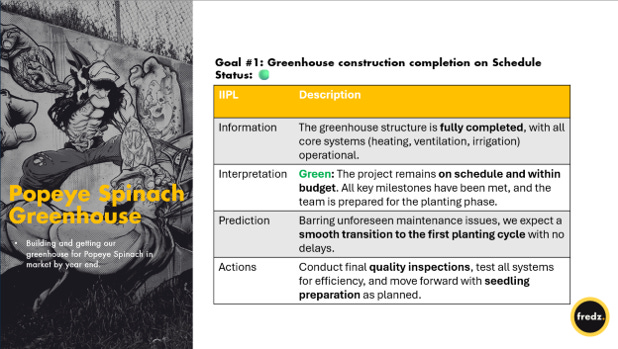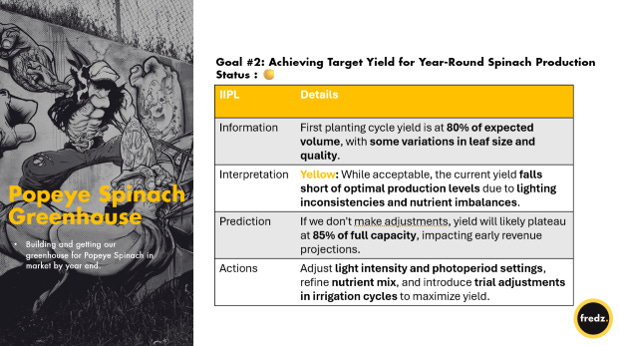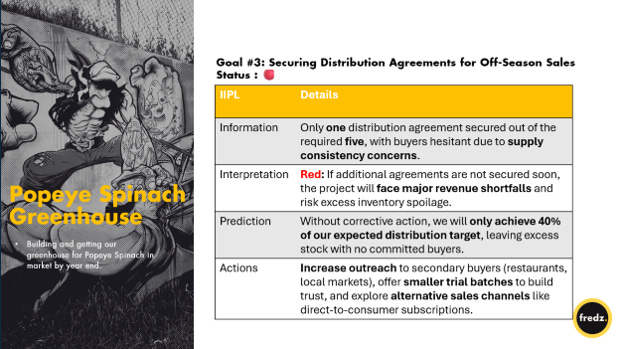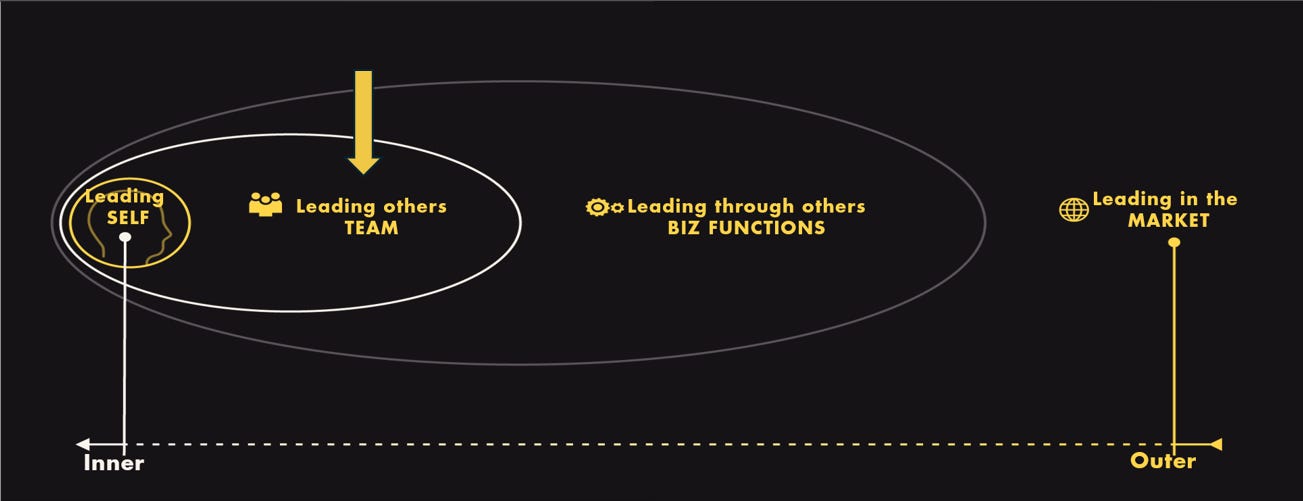Have you ever had that feeling when you ask for a project update and get either a ‘yeah we’re good’ or a 50 slide PowerPoint packed with irrelevant data? – Yeah, me too!
That’s why we decided to use IIPA - simply put it’s a framework for reporting progress, cutting through the noise, and making decisions.
If your project updates feel like weather forecasts 10 days out (uncertain and mostly wrong), read on.
And no, IIPA is not a new craft IPA (though it might make your meetings smoother). It stands for:
Information – Just the facts: What’s happening vs. what we expected.
Interpretation – What those facts mean. Are we ahead, behind, or stuck in a ditch?
Prediction – If nothing changes, where will we land?
Action – What are we going to do about it?
High-performing teams don’t operate on gut feelings or wishful thinking. They use structured, transparent reporting to drive progress. That’s what IIPA is about.
Why IIPA Works (and Where it Fits in your Workflow)
Business runs on rhythm—whether it’s strategic planning (3–5 years), annual operating plans (12 months), or execution cycles (quarterly, monthly, weekly).
IIPA is plug-and-play for your review meetings, from Quarterly Business Reviews (QBRs) to strategic planning sessions. It forces clarity, eliminates ambiguity, and makes it obvious who’s owning what.
What does IIPA look like: an example for a QBR
The context: A team running a produce farm. They aim to produce all year round, through greenhouses and open field production. They have decided to have their Popeye spinach produce available all year round, and they are building a greenhouse for it as well as getting it in the market by year end.
At a high level here is what IIPA would look like
The Real Power of IIPA: Accountability
No more meetings where everyone nods along, but nothing changes? IIPA helps to kill that. It’s a forcing function for accountability.
It makes performance visible—everyone knows who owns what.
It invites constructive input—teams can help course-correct issues early.
It creates a shared language—so no one works in silos or making wild assumptions.
It works because clarity beats confusion, and action beats indecision.
Final Thoughts: Try it, Adapt It, Make it Yours:
IIPA worked for us because it turns data into action. There are other ways to achieve this goal, it’s what I found to work for our own reviews. It’s like Plan-Do-Check-Act (PDCA) and Observe-Orient-Decide-Act (OODA), but I find it simpler and more practical.
More clarity = fewer headaches.
If this made sense to you, like it, share it with your team all are appreciated.
TAG: #LeadingOthers








Fred this is an approach I still use and try to coach my clients on. With so many competing interests and fires, I find it very helpful in focusing on matters most for the business